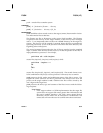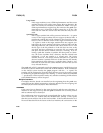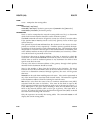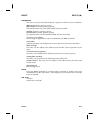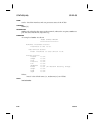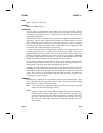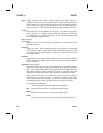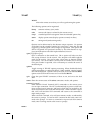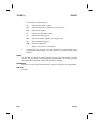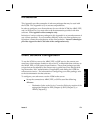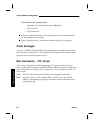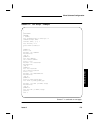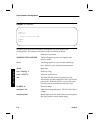
TELNET TELNET ( 1 )
WONT
inform the remote server that you will stop performing the option
The following options can be negotiated:
binary transmit in binary (raw) mode
echo remote echo (input is echoed by the remote server)
exopl extended options list (negotiate from the extended options list)
status display option status (display options currently in effect)
tm timing mark (send a timing mark)
Options can be abbreviated to the shortest unique sequence. No options
are defined on the extended options list at this time. Note that the sga
(suppress go ahead) option can no longer be negotiated. This option will
still be recognized and processed correctly by the telnet daemon to sup-
port communications with older implementations, however.
open [-ec] [-8] host [port]
Open a connection to the named host. The -e option will select an alter-
nate escape character for the session. The -8 option will enable eight-bit
mode for the session. Host can be either a host name or Internet address
(see hosts(4)). Port can be either a service name or number (see services(4)).
If no port number is specified, telnet will attempt to contact the server at
the default port.
options
Toggle viewing of TELNET options processing. When disabled (default),
options negotiation is conducted silently. When enabled, options negotia-
tion will be displayed. Options sent by the local server are labelled SENT;
options received from the remote server are labelled RCVD.
quit Close the open TELNET connection, if there is one, and exit to the local
shell.
status Show the current status of the telnet connection, modes, and options.
transnvt [command]
Send Network Virtual Terminal (NVT) commands to the remote server
over an open connection. The NVT commands help to preserve such func-
tions as abort output, interrupt, and break, which may be invoked by dif-
ferent keystrokes on the local and remote hosts. When command is speci-
fied, telnet will send that NVT command and return to the command or
input mode prompt.
When command is omitted, telnet will enter transnvt mode, as indicated by
the transnvt> prompt. To send an NVT command in this mode, enter com-
mand at the prompt. To return to command or input mode from transnvt
mode, enter a carriage return at the transnvt> prompt.
Issue 3 E-45



